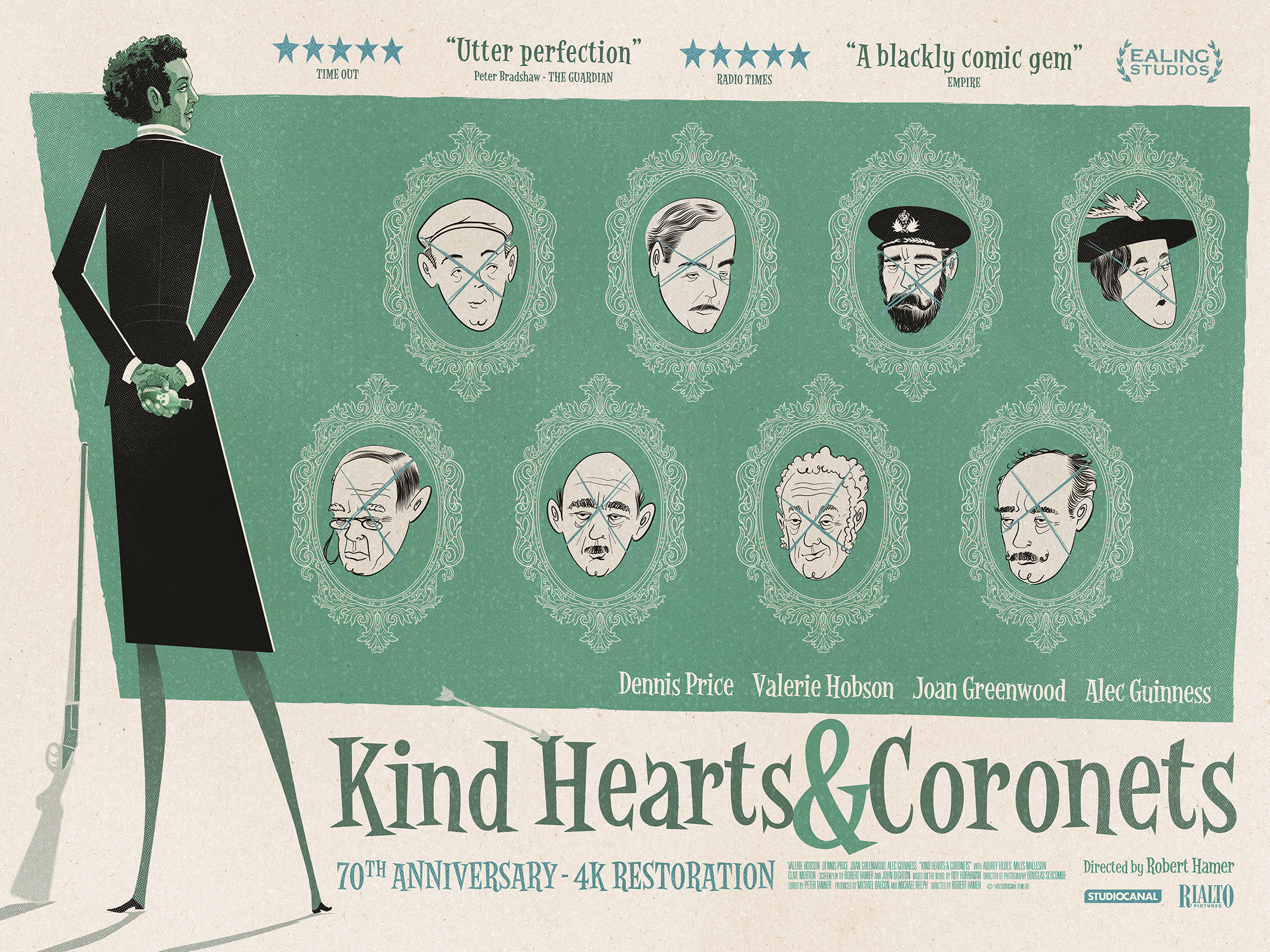
10 Interesting Facts and Figures About “Kind Hearts and Coronets” (1949)
“Kind Hearts and Coronets,” directed by Robert Hamer, is a classic British film that has captivated audiences since its release in 1949. Known for its sharp wit, dark humor, and innovative storytelling, the film has become a significant part of British cinema history. Here are ten interesting facts and figures about this timeless classic.
1. A Unique Premise
The film’s plot revolves around Louis Mazzini, a man who seeks revenge on his aristocratic family by killing off the eight heirs standing between him and the title of Duke of Chalfont. This premise of murder driven by social class commentary was groundbreaking for its time.
2. Multiple Roles by One Actor
Dennis Price, who played Louis Mazzini, is notable for sharing the screen with Alec Guinness, who portrayed all eight members of the D’Ascoyne family that Mazzini must eliminate. Guinness’s ability to seamlessly transition between characters showcased his exceptional versatility as an actor.
3. Critical Acclaim
Upon its release, “Kind Hearts and Coronets” received critical acclaim and has since been regarded as one of the greatest British films. It earned a place in the British Film Institute’s “Top 100 British Films” list and continues to be celebrated for its clever writing and performances.
4. Box Office Success
Despite being released shortly after World War II, the film performed well at the box office. Its success helped to revive the British film industry during a time when it faced numerous challenges and competition from American cinema.
5. The Influence of Noir
The film’s tone and style were heavily influenced by film noir, incorporating elements such as moral ambiguity, dark humor, and a focus on the darker aspects of human nature. This influence set it apart from other British comedies of the time.
6. A Lasting Legacy
“Kind Hearts and Coronets” has inspired numerous filmmakers and works. Its narrative structure and dark comedic elements can be seen echoed in various films and television shows over the decades, solidifying its status as a cultural touchstone.
7. Iconic Quotes
The film is famous for its memorable quotes, such as Louis’s musings on the nature of death and class. These lines have become part of cinematic history, often referenced in discussions surrounding British humor and satire.
8. Cinematic Techniques
The film employed innovative cinematography for the time, using techniques such as deep focus and clever framing to enhance storytelling. The visual style contributed to the film’s suspenseful atmosphere and engaging narrative flow.
9. Historical Context
Released in the aftermath of WWII, “Kind Hearts and Coronets” subtly reflects the changing social landscape of Britain. It critiques the rigid class system and explores themes of ambition and social mobility, resonating with audiences during a time of social change.
10. Awards and Recognition
Although it did not win any major awards upon its release, “Kind Hearts and Coronets” has garnered recognition over the years, including a place in the National Film Registry of the Library of Congress as a film deemed “culturally, historically, or aesthetically significant.”
Conclusion
“Kind Hearts and Coronets” remains a quintessential example of British cinema, combining wit, satire, and a dose of darkness to create a compelling narrative that resonates even today. Its innovative storytelling, memorable performances, and cultural significance ensure that it will continue to be appreciated by film enthusiasts for generations to come.
Discover more from Anglotees
Subscribe to get the latest posts sent to your email.
